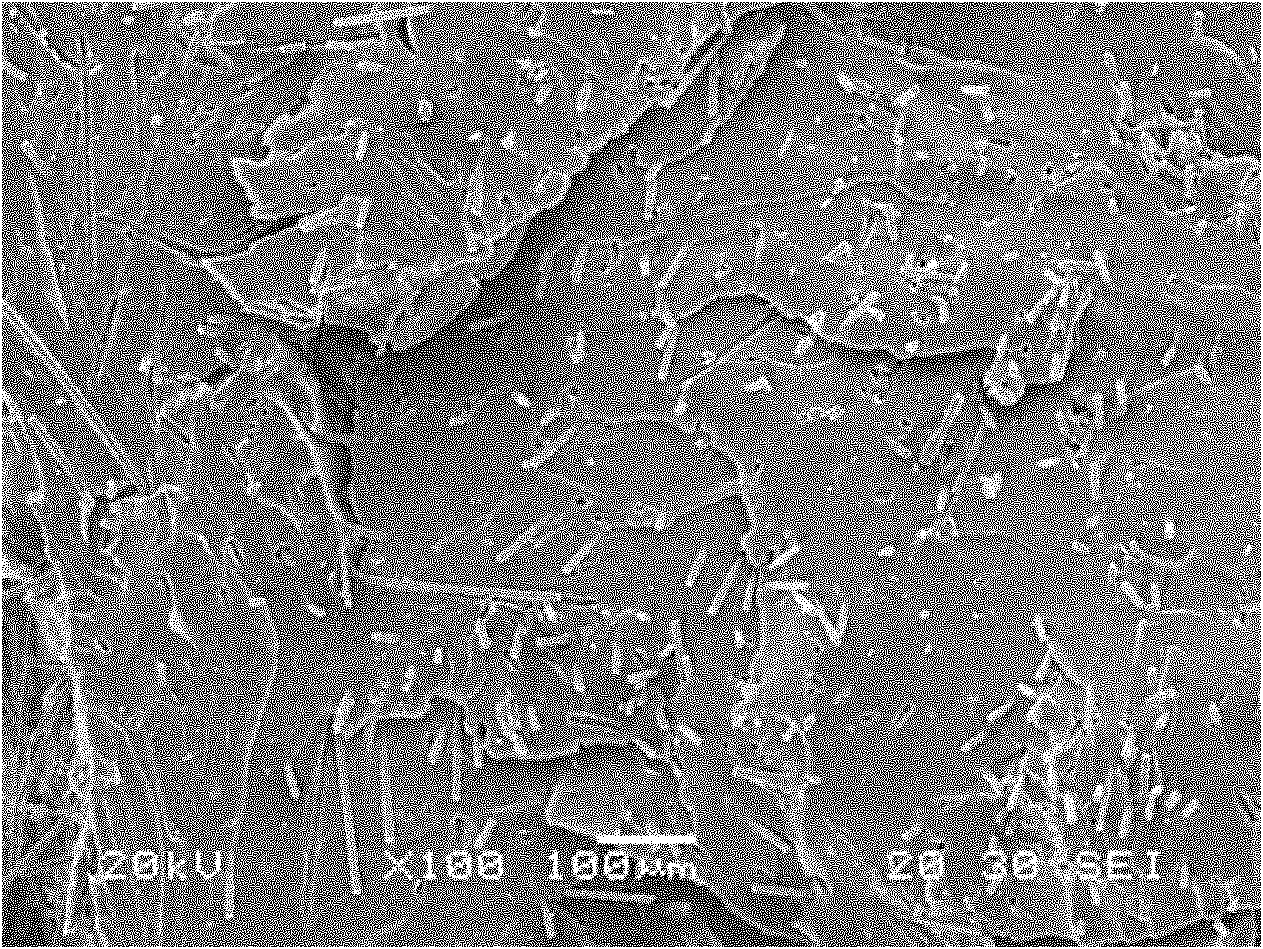Preparation method of chopped carbon fiber reinforced phenolic resin base composite material
A technology of chopped carbon fiber and phenolic resin, applied in the field of composite material preparation, can solve the problems of difficulty in avoiding whisker agglomeration, increase material cost, etc., and achieve the effects of improving interlaminar shear strength, low cost, and avoiding agglomeration phenomenon
- Summary
- Abstract
- Description
- Claims
- Application Information
AI Technical Summary
Problems solved by technology
Method used
Image
Examples
Embodiment 1
[0022] Step 1: Take chopped carbon fibers and heat-treat them in an argon atmosphere furnace at 1200°C to remove metal ions and impurities on the surface; then, clean the heat-treated chopped carbon fibers with acetone in an ultrasonic wave until the surface is glue-free, and place them in an oven after cleaning Dry in medium until the acetone is completely volatilized, and set aside;
[0023] Step 2: Weigh 25 g of the chopped carbon fiber treated in step 1, soak it in a dispersant solution with a concentration of 0.1% by weight for 10 hours, and the dispersant is selected from methylcellulose solution, and then wash it with distilled water dry, ready for use;
[0024] Step 3: Weigh 10g of the material obtained in step 2, then place it in 200ml of absolute ethanol, stir it fully with a stirrer, and dissolve 100g of phenol formaldehyde resin at the same time, after fully stirring and mixing, the mixture of resin matrix and chopped carbon fiber is obtained. material;
[0025] ...
Embodiment 2
[0030] Step 1: Take chopped carbon fibers and heat-treat them in an argon atmosphere furnace at 1400°C to remove surface metal ions and impurities. After heat-treatment, carbon fibers are cleaned with acetone in ultrasonic waves until the surface is glue-free. After cleaning, dry them in an oven until Acetone is completely volatilized and reserved;
[0031] Step 2: Weigh 35 g of the chopped carbon fiber treated in step 1, soak it in a dispersant solution with a concentration of 0.3% by weight for 15 hours, and the dispersant solution is selected from hydroxypropyl methylcellulose solution, and then use distilled water After cleaning, dry and set aside;
[0032] Step 3: Weigh 20 g of the material obtained in step 2, place it in 200 ml of absolute ethanol, stir it fully with a stirrer, and dissolve 100 g of cresol formaldehyde resin at the same time, stir and mix evenly to obtain a mixture of resin matrix and chopped carbon fiber;
[0033] Step 4: Leave the mixture obtained in ...
Embodiment 3
[0038] Step 1: Take chopped carbon fibers and heat-treat them in an argon atmosphere furnace at 1600°C to remove surface metal ions and impurities. After heat-treatment, carbon fibers are cleaned with acetone in ultrasonic waves until the surface is free of glue. After cleaning, dry them in an oven until Acetone is completely volatilized and reserved;
[0039] Step 2: Weigh 45 g of the chopped carbon fiber treated in step 1, soak it in a dispersant solution with a concentration of 0.5% by weight for 20 hours, and the dispersant solution is selected from sodium polyacrylate solution, and then wash it with distilled water dry, ready for use;
[0040] Step 3: Weigh 30g of the material obtained in step 2, put it in 200ml of absolute ethanol, stir fully with a stirrer, and dissolve 100g of xylenol formaldehyde resin at the same time, stir evenly, and obtain a mixture of resin matrix and chopped carbon fiber ;
[0041] Step 4: The mixture obtained after drying in Step 3 was left a...
PUM
| Property | Measurement | Unit |
|---|---|---|
| shear strength | aaaaa | aaaaa |
| shear strength | aaaaa | aaaaa |
| shear strength | aaaaa | aaaaa |
Abstract
Description
Claims
Application Information
 Login to View More
Login to View More - R&D
- Intellectual Property
- Life Sciences
- Materials
- Tech Scout
- Unparalleled Data Quality
- Higher Quality Content
- 60% Fewer Hallucinations
Browse by: Latest US Patents, China's latest patents, Technical Efficacy Thesaurus, Application Domain, Technology Topic, Popular Technical Reports.
© 2025 PatSnap. All rights reserved.Legal|Privacy policy|Modern Slavery Act Transparency Statement|Sitemap|About US| Contact US: help@patsnap.com


